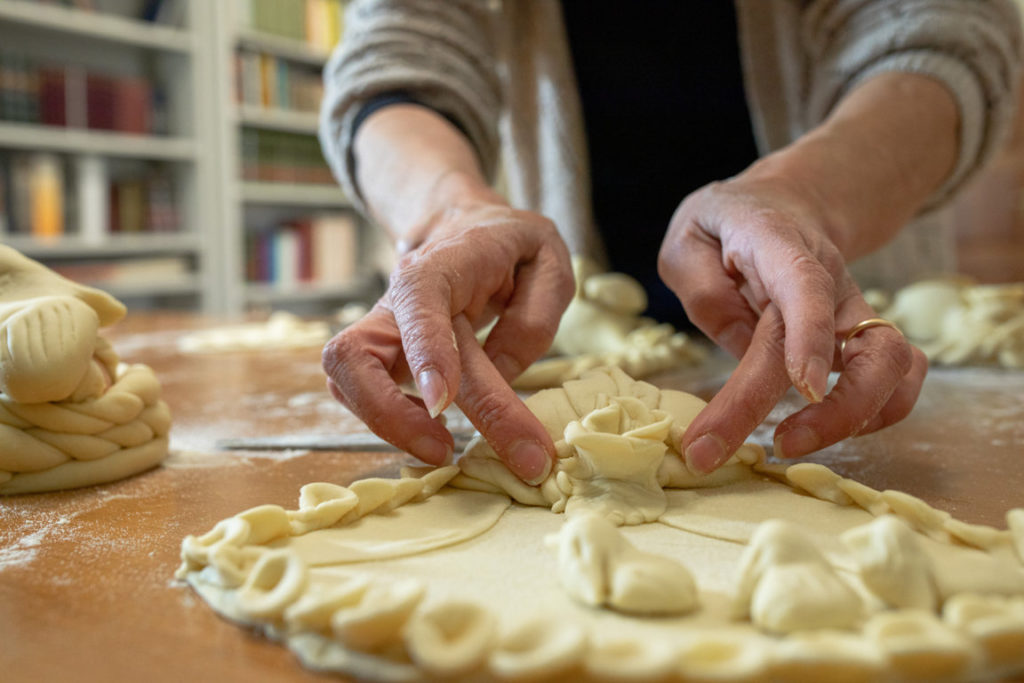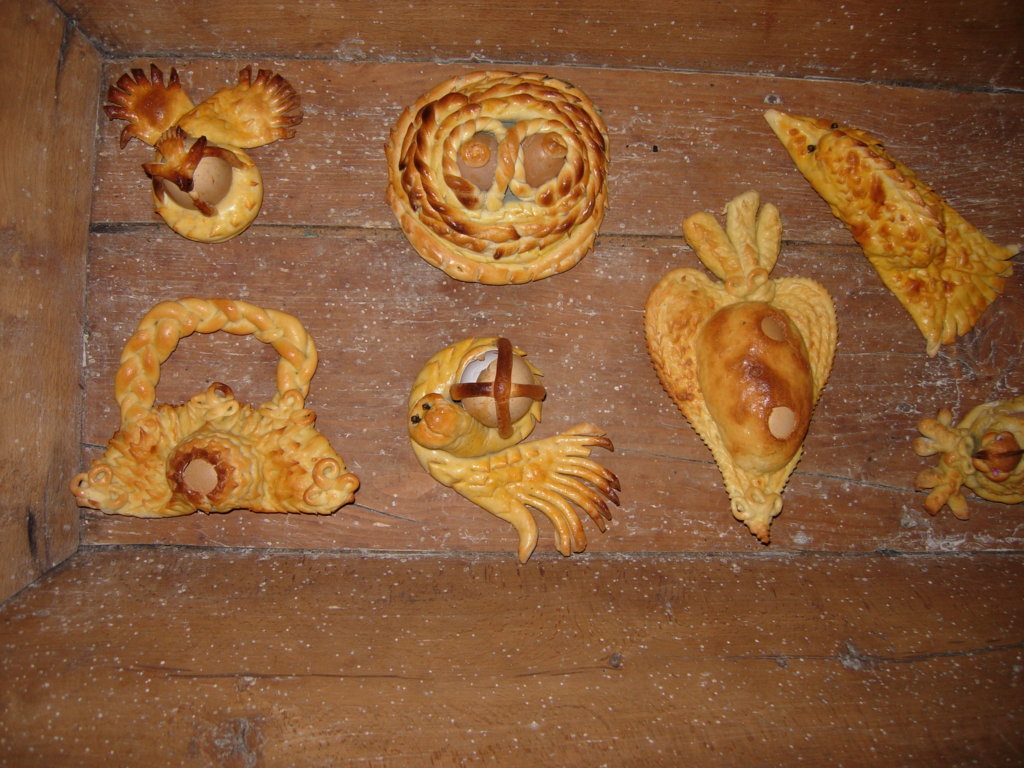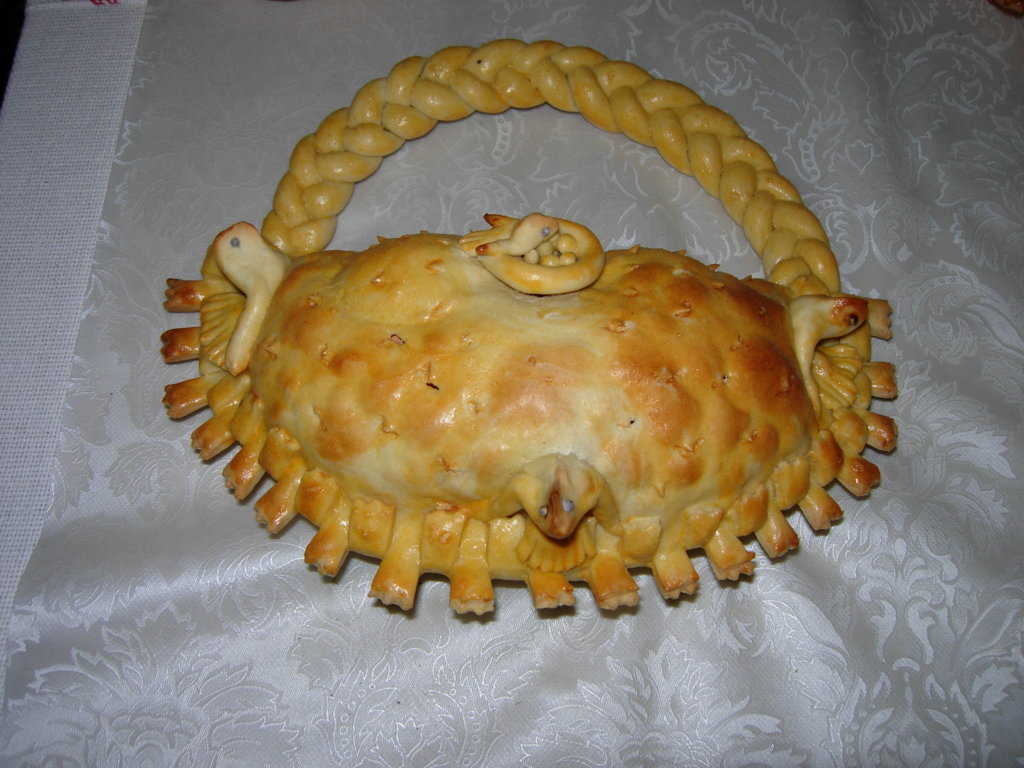The figurative breads of Easter in Buscemi
If the breads of Saint Joseph adorn altars or the dinner tables during feast banquets, Easter breads stand as independent objects—reliefs that imitate nature and its creatures, or items from daily life. Many include an embedded egg, symbol of birth and rebirth, of life and its playful imitation. And so, in Buscemi, more than anywhere else, on Easter Eve, figurative breads appear, delighting children. A bridge between life and death, between need and abundance, the figurative bread is a festive sign, the joyful culmination of the bread-making process, meant for boys and girls as both a gift and a blessing from the adults.
Hands—those ancestral tools capable of reproducing forms and objects—are the true protagonists in crafting Buscemi’s figurative Easter breads. Thus, the wisdom of hands and a memory passed down through generations, using only a few simple tools such as the signaturi or lasagnaturi (rolling pin), a knife, a small pincer called mucasciu, a fluted pastry wheel, and some metal cylinders, are used to shape traditional Easter forms known as:
Palumma (dove)
iadhuzzu (little rooster)
cavadhuzzu (little horse)
u niru (nest)
u panariedhu (little basket or purse)
u puorcuspinu (porcupine).
But first of all, a large bread is prepared, called a paciuzza (a diminutive of “peace”), which is consumed by the whole family on Easter Day, as a symbol of family solidarity and unity.
This element has been included in the Register of Intangible Heritage of local interest of the Municipality of Buscemi, as part of Intervention 2 “Activation of the Observatory on the Intangible Cultural Heritage of the Territory through the application of the REIL methodology – Register of Intangible Heritage of Local Interest”, within the”Buscemi Borgo Immateriale” project, funded by the NRRP (National Recovery and Resilience Plan), Mission: Digitalisation, innovation, competitiveness, culture and tourism, Component: Tourism and culture 4.0, Investment 2.1 “Attractiveness of villages.” CUP: I84H22000050006.




